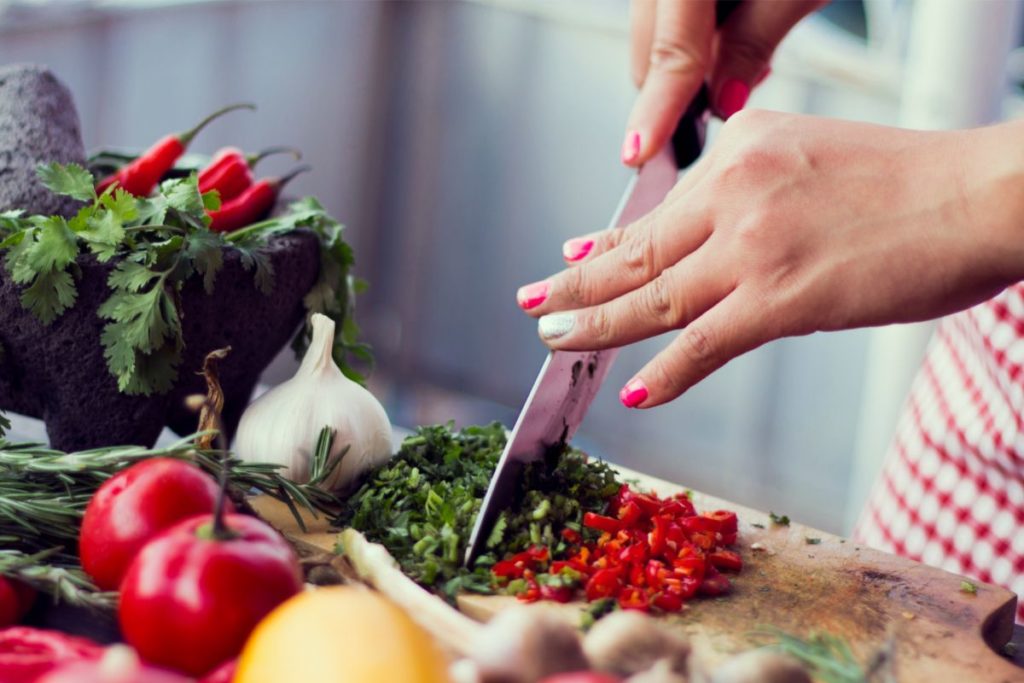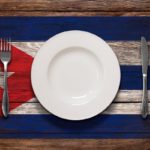Both Cuban and Mexican food are extremely popular. They’re both delicious and full of amazing flavors, but what’s really the difference?
It can be difficult to pick it apart if you don’t know where to start, but there are a lot of big differences between these two cuisines.

For one, there are different influences that have impacted the food! Not only that, but there are also different ingredients and flavors used in both cuisines.
These three things come together to create unique and mouth-watering food that the world has come to love.
If you want to find out how these three factors affect the food, then just keep reading! We’re going to go through everything you need to know about it in the sections below. You’ll be a pro at the end of this!
Cuban Food Vs. Mexican Food: What’s The Difference?
Differences In Influence
The first difference in Cuban vs Mexican food is the influence. These two countries have very different histories, and have therefore been influenced differently over the course of their history.
Let’s take a look at this influence for these countries below:
Cuba
There are three primary cultures that have influenced Cuban food: French, African, and Caribbean cultures.
Cuba’s proximity to the Caribbean islands have had a huge impact on the flavors and ingredients they use.
Not only that, but the history of this country with French Guyana along with the slave trade has resulted in the food being what it is today.
Cuba has also had a large population that is of Spanish descent, which has also had a huge impact on its food!
Mexico
The incredible Aztec and Maya people lived in Mexico and already had a unique cuisine of their own.
However, when the Spanish landed in Mexico and settled, the cuisine of the country changed dramatically. The recipes were altered and blended together to create the food we all know today.
Difference In Ingredients

Although both Cuba and Mexico are warm, they grow different ingredients to one another. There are a number of ingredients in each country that are locally popular and unique to them.
Cuba
Cuba is known for using a lot of fruity ingredients in their cooking. A lot of their famous recipes use citrus marinades to give the food some extra depth and flavor.
Not only that, but plantains are often used in both main courses, side dishes, and entrées because of their extreme versatility.
It’s very common to see root vegetables in Cuban cuisine, and things like yucca, potatoes, carrots, and cabbage are popular. Pork is the most popular meat, and beef is the least available.
Mexico
Beef is by far the most popular meat used in Mexico. However, they also use a lot of pork, goat, sheep, and chicken. Seafood is popular on the coast, but it isn’t readily available everywhere.
In terms of other popular ingredients, Mexican cuisine uses a lot of beans and rice. Chiles are incredibly popular and give dishes plenty of flavor. Mexican food often includes ingredients like nopal, which is cactus, jicama, and tomatillos.
While Mexican cuisine also uses plantains, they are typically only served in sweet dishes. They are often fried up and sweetened with condensed milk to make an easy but delicious dessert.
Difference In Flavors And Spices
One of the biggest differences between Cuban and Mexican cuisine comes down to the flavors and spices they use.
If you’ve been to a Mexican and Cuban restaurant, these differences will probably be very obvious. However, we will take a look at the differences in flavors and spices in some detail below.
Cuba
Any menu you look at in a Cuban restaurant will likely be full of foods that have been soaked in fruity marinades or some with a chutney.
The use of fruit is extremely common in Cuban cuisine, and is something that sets it apart from Mexican food.
Not only that, but while food from Cuba is packed full of flavor, it is typically less spicy. There’s less of a focus on things like chiles, and more focus on garlic and more fruity flavors.
Of course, some Cuban dishes are still spicy enough to make a grown man cry, but compared to Mexican spices, Cuban cuisine is relatively mild.
Cuban cuisine uses a lot of seafood in their dishes – as expected. Popular seafood dishes, like ceviche, have also made their way to Cuba from Peru.
This dish consists of raw fish that is “cooked” using acidic citrus juice. While mild, this dish can become popular in Cuba, and is something that often comes with things like red onion, mint, and chile.
Mexico
Mexican cuisine is known for their hearty spices and use of chile peppers. Ingredients like cumin and cilantro are stables in all Mexican cooking, and come together to create powerful and unforgettable dishes.
hese spices are often mixed with something tangy, like sour cream or lime, and fruit doesn’t have nearly as much of a focal point.
Even foods that are typically bland, like rice or pinto beans, are seasoned in Mexican cuisine. There is nothing that doesn’t go with the classic jalapeños and cilantro, and this cuisine makes that clear.
Classic dishes like salsa show that Mexican cuisine isn’t afraid to mix ingredients together to come up with something special. The use of cheese is also popular in this cuisine, and is not seen much in Cuban cuisine.
Although seafood is popular on the coast, the majority of Mexico is not known for their seafood dishes. Of course, seafood tacos are always a favorite, but you are more likely to come across beef, pork, or chicken tacos in the day-to-day.
Popular Foods

There are a number of popular meals that you will recognize from each of these countries. Thanks to the Spanish influence on both of these countries, there are some minor similarities in some cases.
However, for the most part, dishes from these two countries are unique and special to their own country.
Cuba
- Medianoche
- Pernil relleno de moros y cristianos
- Vaca frita
- Arroz con pollo
- Shrimp in coconut sauce
- Lechon asado
- Pulpeta
- Tamal en cazuela
- Costillitas
- Roast chicken
- Lomo ahumado
- Ropa vieja
- Filete uruguayo
- Paella
- Chicharrones
- Ajiaco
Mexico
- Chilaquiles
- Huevos rancheros
- Machaca
- Tacos
- Quesadillas
- Taquitos
- Discada
- Burritos
- Pozole de pollo o guajolote
- Menudo
- Cochinita pibil
- Tamales
- Refried beans
- Enchiladas
- Chile en nogada
- Esquites
Final Thoughts
There are a number of big differences between Cuban and Mexican cuisine. The first thing to do is look at the influences that each of these countries have experienced throughout their history.
For example, Cuba is situated very close to the Caribbean, which has influences the cuisine greatly, as has French and African cultures because of the slave trade.
Mexico’s cuisine has primarily been influenced by Aztec, Maya, and Spanish cuisine due to the Spanish who colonized the country in the 1500s.
The ingredients grown in the country have also significantly impacted their cuisine.
For example, Mexico’s hot and dry climate is perfect for growing chile peppers, which has resulted in the cuisine including a lot of spicy food.
Cuba, on the other hand, is more tropical, which lad led to more fruit growth and a more mild cuisine in terms of flavor.
- What Is The Largest Island In Cuba? - September 19, 2022
- Havana – Why Is It Cuba’s Most Exciting City? - September 19, 2022
- Cheapest Time To Visit Cuba (Ultimate Guide) - September 19, 2022








